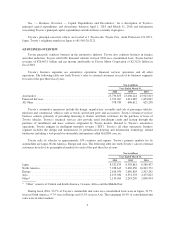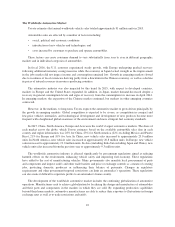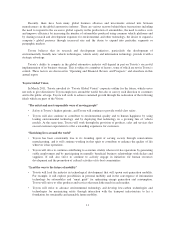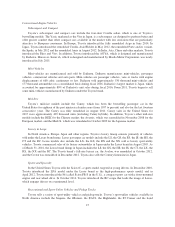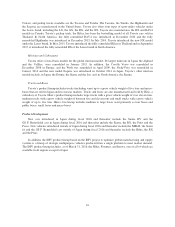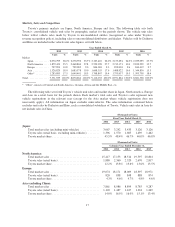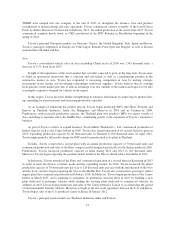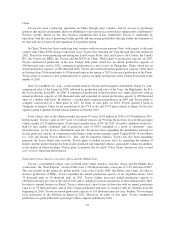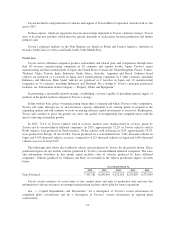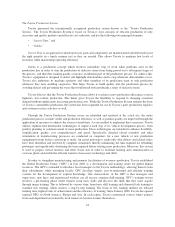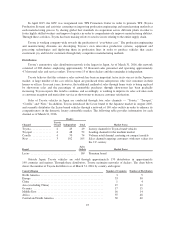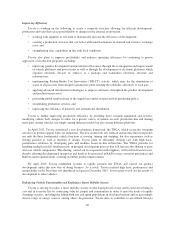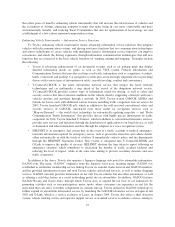Toyota 2015 Annual Report Download - page 23
Download and view the complete annual report
Please find page 23 of the 2015 Toyota annual report below. You can navigate through the pages in the report by either clicking on the pages listed below, or by using the keyword search tool below to find specific information within the annual report.Japan
Japan is one of the leading countries with respect to technological advancements and improvements and will
continue to demonstrate such strength. Toyota strives to earn customer satisfaction by introducing products
distinctive of Japan’s manufacturing ability such as value-added products including Lexus models, hybrid
vehicles, vehicles with 3-seat rows and mini-vehicles. Toyota’s consolidated vehicle sales in Japan in fiscal
2016 was 2,059 thousand units, a decrease of 95 thousand units in comparison with the previous year. Toyota
endeavors to secure and maintain its large share of and position atop the Japanese market. Toyota held a
domestic market share (excluding mini-vehicles) on a retail basis of 46.7% in fiscal 2014, 46.0% in fiscal
2015 and 46.8% in fiscal 2016.
Although Toyota’s principle is to conduct production in regions where it enjoys true competitiveness, it
considers Japan to be the source of its good manufacturing practices. Toyota supports its operations worldwide
through measures such as the development of new technologies and products, low-volume vehicles to
complement local production, production of global vehicle models which straddle multiple regions and
supporting overseas factories. Toyota will also launch the implementation of the new platform and the new unit
for the Toyota New Global Architecture (“TNGA”) globally, with Japan at the core. In Japan, Toyota is
implementing flexible production based on market needs, in order to support its large share of domestic sales.
Since Toyota formed an alliance with Fuji Heavy Industries, Ltd. (“FHI”) in 2005, Toyota and FHI have
utilized each other’s resources in development and production. In April 2008, in order to create synergy and to
further strengthen competitiveness, Toyota, Daihatsu and FHI agreed on the following three points: (1) Toyota
and FHI will jointly develop a compact rear-wheel-drive sports car that will be marketed by both Toyota and
FHI, (2) Toyota will provide FHI with a compact car on an original equipment manufacturing basis (“OEM”) and
(3) Daihatsu will supply FHI with mini-vehicles and an FHI version of the Daihatsu Coo compact car on an
OEM basis. In order to promote a smooth cooperation, FHI transferred 61 million FHI shares owned by FHI to
Toyota in July 2008. As a result of this transfer, Toyota owns 16.5% of FHI issued shares. While Toyota vehicles
have been manufactured at FHI’s North American production center, Subaru of Indiana Automotive, Inc., since
2007, Toyota and FHI have decided to cease such production in the fall of 2016, and the collaboration between
Toyota and FHI will shift going forward to collaboration focusing on products and technology.
Toyota and Mazda have been engaged in collaboration such as the licensing of Toyota’s hybrid technologies
to Mazda and the production of compact cars for Toyota at Mazda’s plant in Mexico. In May 2015, Toyota and
Mazda entered into an agreement to build a mutually beneficial long-term partnership that leverages the
resources of both companies to complement and enhance each other’s products and technologies and that will
result in more appealing cars that meet the diverse needs and tastes of customers around the world. A joint
committee is currently evaluating how best to utilize each company’s respective strengths. The committee will
encourage broad and meaningful collaboration across a range of fields, including environmental and advanced
safety technologies.
In 2011, Toyota and BMW Group agreed to conduct collaborative research in the field of next-generation
lithium-ion battery technologies and for BMW to supply diesel engines to Toyota Motor Europe, Toyota’s
European subsidiary. In 2013, as part of their strategic long-term cooperation in the field of sustainable mobility,
Toyota and BMW Group entered into agreements for the joint development of a fuel cell system, joint
development of architecture and components for sports vehicles and joint research and development of
lightweight technologies. The two companies also agreed to commence collaborative research on lithium-air
batteries, a post-lithium-battery solution, marking the second phase of collaborative research into next-generation
lithium-ion battery cells.
In Japan, there are five major domestic manufacturers, five specialized domestic manufacturers and a
growing volume of imports from major United States and European manufacturers. The prolonged economic
slump in the Japanese economy and the recent increases in environmental awareness have also shifted consumer
preference towards more affordable automobiles such as compact and subcompact vehicles and towards utility
18



